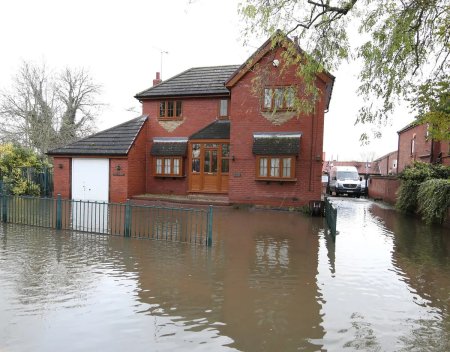Blog Categories
- Appliances Four
- Athletic Seating
- Auto Helpers
- Automated Stock Rooms
- Chocolate Four
- CuraFlo
- Damaged Goods Dating
- Flood Insurance Four
- Game Addict
- Hi Tech Pest Control
- HVAC Four
- Medical Labels Four
- Mental Health Four
- National CWS
- Promotional Ideas
- Seguros Lara Insurance
- Stem Cell Worx
- The Hidden Truth
- The Last Refuge
- The Mozilla Blog
- Video Editing Four
- Web Design Dev
- Website Development Four
- Windows Blog
house flood coverage
[BACK]


Posted On: August 18, 2020
House flood coverage typically refers to insurance coverage for damage caused by floods to a residential property. It's important to note that standard homeowners insurance policies usually do not cover flood damage. Homeowners need to purchase a separate flood insurance policy to protect their property from flood-related losses.Here are some key points about house flood coverage:National Flood Insurance Program (NFIP): In the United States, the NFIP, administered by the Federal Emergency Management Agency (FEMA), is the primary source of flood insurance. Homeowners can purchase a policy through the NFIP to cover their dwelling and its contents.Coverage: Flood insurance typically covers damage to the structure of the home and its foundation, as well as damage to electrical and plumbing systems, HVAC systems, appliances, carpeting, and some personal belongings. There are limits on the coverage amount for both the building and its contents.Exclusions: Certain items and types of damage may not be covered by flood insurance. It's important to review the policy carefully to understand the limitations and exclusions. For example, coverage for basements and their contents may be limited.Waiting Period: There is usually a waiting period (commonly 30 days) between the time the policy is purchased and when it goes into effect. It's important to plan ahead and not wait until a flood is imminent to buy coverage.Private Flood Insurance: In addition to the NFIP, some private insurers offer flood insurance. These policies may have different terms and coverage options compared to the NFIP, and they may be suitable for properties that don't qualify for NFIP coverage.Risk Assessment: The cost of flood insurance depends on factors such as the property's flood risk, its elevation, and the amount of coverage needed. Homes located in high-risk flood zones will typically have higher premiums.Community Participation: To be eligible for NFIP coverage, the community must participate in the program. Homeowners can check the flood zone map and verify whether their community is part of the NFIP.It's crucial for homeowners, especially those in flood-prone areas, to assess their risk and consider purchasing flood insurance to protect their homes and belongings. It's recommended to consult with insurance professionals to understand the specific terms and conditions of a flood insurance policy and ensure adequate coverage.
Re Posted From: house flood coverage
[BACK]

[BACK]
Posted On: August 18, 2020
House flood coverage typically refers to insurance coverage for damage caused by floods to a residential property. It's important to note that standard homeowners insurance policies usually do not cover flood damage. Homeowners need to purchase a separate flood insurance policy to protect their property from flood-related losses.Here are some key points about house flood coverage:National Flood Insurance Program (NFIP): In the United States, the NFIP, administered by the Federal Emergency Management Agency (FEMA), is the primary source of flood insurance. Homeowners can purchase a policy through the NFIP to cover their dwelling and its contents.Coverage: Flood insurance typically covers damage to the structure of the home and its foundation, as well as damage to electrical and plumbing systems, HVAC systems, appliances, carpeting, and some personal belongings. There are limits on the coverage amount for both the building and its contents.Exclusions: Certain items and types of damage may not be covered by flood insurance. It's important to review the policy carefully to understand the limitations and exclusions. For example, coverage for basements and their contents may be limited.Waiting Period: There is usually a waiting period (commonly 30 days) between the time the policy is purchased and when it goes into effect. It's important to plan ahead and not wait until a flood is imminent to buy coverage.Private Flood Insurance: In addition to the NFIP, some private insurers offer flood insurance. These policies may have different terms and coverage options compared to the NFIP, and they may be suitable for properties that don't qualify for NFIP coverage.Risk Assessment: The cost of flood insurance depends on factors such as the property's flood risk, its elevation, and the amount of coverage needed. Homes located in high-risk flood zones will typically have higher premiums.Community Participation: To be eligible for NFIP coverage, the community must participate in the program. Homeowners can check the flood zone map and verify whether their community is part of the NFIP.It's crucial for homeowners, especially those in flood-prone areas, to assess their risk and consider purchasing flood insurance to protect their homes and belongings. It's recommended to consult with insurance professionals to understand the specific terms and conditions of a flood insurance policy and ensure adequate coverage.
Re Posted From: house flood coverage

